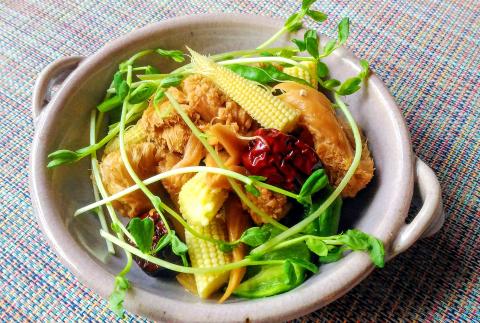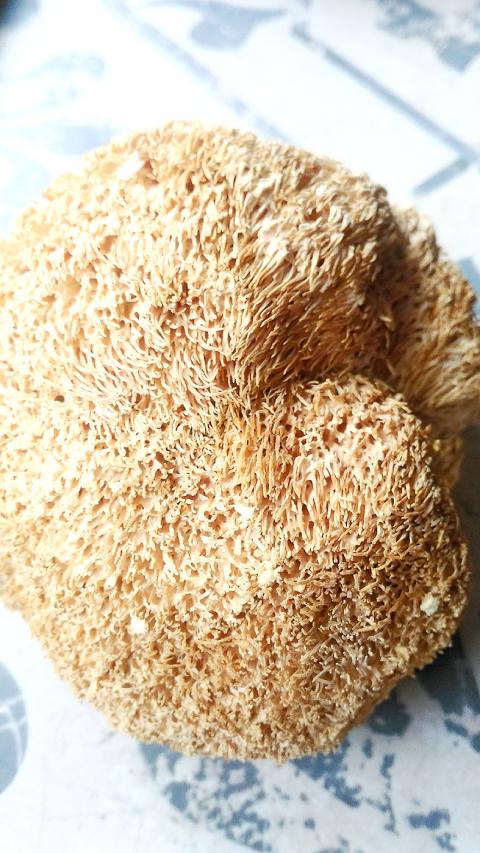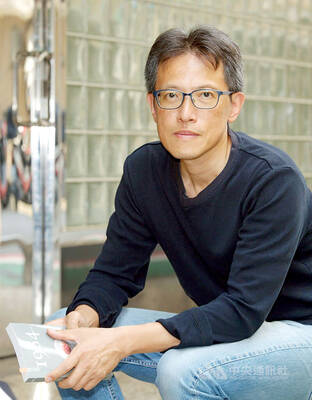Mushrooms are a highly prized part of many culinary traditions due to the amazing fragrance they can impart to food, and in the Chinese tradition none has a higher place than the monkey head mushroom (猴頭菇), which is regarded as one of the four great delicacies of Chinese cuisine, along with other exotica such as bird’s nest, shark’s fin and bear’s paw.
These dishes have largely fallen out of the mainstream, and as they clearly derive their cachet from their rarity and the damaging impact on their victims, this is for the best. Fortunately monkey head mushrooms have nothing to do with monkeys and are not in any immediate danger of extinction. Harvesting, as far as I can tell, is not the cause of undue cruelty. So if you want to enjoy an ancient Chinese delicacy, the monkey head mushroom seems to be a good choice.
The monkey head mushroom is also called the lion’s mane mushroom or the bearded tooth mushroom (it is a member of the tooth fungus group), and is sometimes known by its Japanese name of yamabushitake, or goes by such sobriquets as pom-pom mushroom or bearded hedgehog mushroom.

Photo: Ian Bartholomew
Monkey head is an unlikely choice for a culinary delicacy. It is a bulbous, sometimes furry looking growth that attaches itself to hardwood. It’s color ranges from white through to a dirty blond. It is generally sold dried and in this form looks like a small bath sponge or loofah. Fresh monkey head mushrooms are available, but they are the exception.
The loofah-like mushrooms are not particularly approachable as a culinary ingredient but despite appearances, their aroma is highly prized, as are their numerous medicinal properties. Once you know what to do with them, monkey head mushrooms are in fact remarkably versatile and serve as an easy standby in the pantry.
In some preparations they have a remarkably meaty texture and often serve as a meat-substitute in Chinese vegetarian cuisine. While not being a vegetarian, I have no objection to vegetarian food but have often balked at the use of processed gluten products in Chinese vegetarian cuisine, which seems to me both hypocritical and unhealthy.

Photo: Ian Bartholomew
Anyway, ingredients such as monkey head mushrooms, which depending on preparation can make a good stab at reproducing the textural qualities of red meat or even fish and seafood (some imaginative suspension of disbelief is required for this trick to work, but the fibrous structure of the mushroom does provide the requisite chewiness). There are even recipes for monkey head mushroom steaks out there on the Internet.
Monkey head mushrooms do require a degree of preparatory work, as befits their status as a delicacy. Unlike most mushrooms used in western cuisine, the monkey head mushroom is not afraid of getting wet, and in fact requires extensive soaking prior to cooking. The method and time required for soaking varies widely depending on whom you consult, but the key point seems to alternately soak and squeeze the mushroom until it only excretes clear water.
To achieve this, some recommend breaking up the mushroom and placing it in a pot of water, bringing this to a boil then discarding the water. This can be done once or twice. Simply soaking the mushroom in cold water is also a popular recommendation and my own favored method.
Place the mushroom in a bowl of water, and if the weather is warm, it is probably best to put it in the fridge. Soak it for about two hours then squeeze out the water as you would from a sponge. The center of the mushroom may still be rather firm after the first soaking, but will gradually soften. Add more water and repeat four or five times.
After soaking, the water will turn a light amber, but with repeated soaking and squeezing, it will gradually clear. Finally, once the water is clear, tear up the squeezed dried mushroom into bite sized pieces. At this point the mushroom can either be marinated with soy and other flavorings or deep fried until crisp before being frozen.
The marinating and frying is all rather a chore and really once the mushroom is reasonably clean and soft it can be put to use. The water need not be entirely clear either, and some cooks, particularly in the preparation of dishes with a stronger flavoring, suggest that the slight bitterness associated with the amber liquid enhances the flavor of the dish. My own mode of operation is that once the mushroom has been through about four soakings and squeezings, it can be stored in fridge or freezer. The ready torn pieces can be easily thrown into a soup or quickly defrosted for a quick meatless stir fry with other vegetables and mushrooms.
Monkey head mushrooms are cultivated in Taiwan but production is very limited and the dried product is most easily available from dried good stores, particularly those specializing in delicacies from China. Dihua Street (迪化街) in Taipei probably offers the best selection of high quality product. While it is not particularly cheap, given that one mushroom can provide adequate material for a dish to serve two (it expands considerably with the extended soaking), it is really pretty economic.
On the health front, monkey head mushrooms boast an almost absurdly long list be possible benefits. Selfhacked.com, a health and nutritional Web site, attributes 24 possible benefits including everything from improved brain function and help against Alzheimer’s to readjusting your circadian rhythms. In Chinese culinary lore the monkey head mushroom is a powerful agent in the enhancement of health and longevity. And thousands of years of cultural heritage can’t be wrong, can it?
Once again, while monkey head mushrooms are unlikely to allow you to live forever, they are likely to do you more good than harm. That they add a nice meaty bulk to vegetarian food is an added plus, but the main thing for me is their convenience (once all the preparation has been done) and their addition to the palette of flavors that can be used for quick weekday meals.
Braised Monkey Head Mushrooms
Recipe
(Serves 4)
A good homemade stock makes all the difference with this dish, which has a rich perfume that pairs easily with all kinds of other flavors. If you have opted to pre-fry the mushrooms before storage, you can simply reduce the frying time accordingly.
Ingredients
2 monkey head mushrooms
6 cloves garlic
8 thin slices of fresh ginger
2 green chili peppers, sliced
8 shoots steamed baby corn
200ml vegetable stock, preferably homemade
2 tbsp rice wine or dry sherry
2 tbsp dark sesame oil
2 tbsp neutral vegetable oil
1 tbsp light soy
4 Chinese red dates
Salt and white pepper
Directions
1. Wash the mushrooms, then soak and squeeze repeatedly three or four times over five or six hours. Break the mushrooms into bite sized pieces. (You can do this with a larger amount than you plan to use, keeping the extra to freeze.)
2. Peel and smash the garlic.
3. Warm a saute pan and add the sesame oil, vegetable oil and thin slices of ginger.
4. Fry the ginger until it begins to crinkle.
5. Raise the heat to medium and add the mushrooms and garlic. Season with salt. Fry the mushrooms and garlic until they begin to color, about 5 minutes.
6. Add the wine and the stock. Bring to a boil and add chili peppers and dates.
7. Allow the liquid to reduce to about a quarter then add the corn and soy. Add white pepper and salt to taste. Cook for another 2 minutes and serve.
Ian Bartholomew runs Ian’s Table, a small guesthouse in Hualien. He has lived in Taiwan for many years writing about the food scene and has decided that until you look at farming, you know nothing about the food you eat. He can be contacted at Hualien202@gmail.com.

Mongolian influencer Anudari Daarya looks effortlessly glamorous and carefree in her social media posts — but the classically trained pianist’s road to acceptance as a transgender artist has been anything but easy. She is one of a growing number of Mongolian LGBTQ youth challenging stereotypes and fighting for acceptance through media representation in the socially conservative country. LGBTQ Mongolians often hide their identities from their employers and colleagues for fear of discrimination, with a survey by the non-profit LGBT Centre Mongolia showing that only 20 percent of people felt comfortable coming out at work. Daarya, 25, said she has faced discrimination since she

It is one of the more remarkable facts of Taiwan history that it was never occupied or claimed by any of the numerous kingdoms of southern China — Han or otherwise — that lay just across the water from it. None of their brilliant ministers ever discovered that Taiwan was a “core interest” of the state whose annexation was “inevitable.” As Paul Kua notes in an excellent monograph laying out how the Portuguese gave Taiwan the name “Formosa,” the first Europeans to express an interest in occupying Taiwan were the Spanish. Tonio Andrade in his seminal work, How Taiwan Became Chinese,

April 21 to April 27 Hsieh Er’s (謝娥) political fortunes were rising fast after she got out of jail and joined the Chinese Nationalist Party (KMT) in December 1945. Not only did she hold key positions in various committees, she was elected the only woman on the Taipei City Council and headed to Nanjing in 1946 as the sole Taiwanese female representative to the National Constituent Assembly. With the support of first lady Soong May-ling (宋美齡), she started the Taipei Women’s Association and Taiwan Provincial Women’s Association, where she

More than 75 years after the publication of Nineteen Eighty-Four, the Orwellian phrase “Big Brother is watching you” has become so familiar to most of the Taiwanese public that even those who haven’t read the novel recognize it. That phrase has now been given a new look by amateur translator Tsiu Ing-sing (周盈成), who recently completed the first full Taiwanese translation of George Orwell’s dystopian classic. Tsiu — who completed the nearly 160,000-word project in his spare time over four years — said his goal was to “prove it possible” that foreign literature could be rendered in Taiwanese. The translation is part of